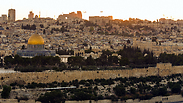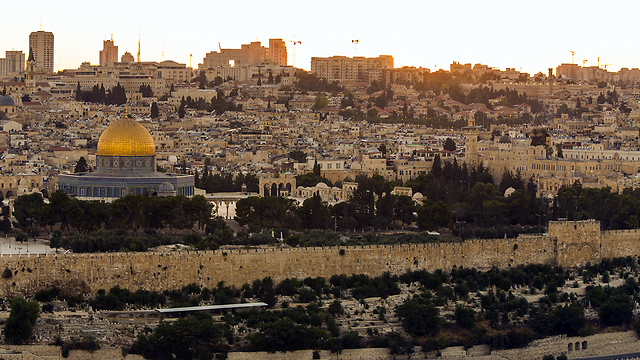
Jerusalem
Photo: Andrew McIntire/TPS

Fewer people move to Jerusalem, ultra-Orthodox presence increases
New data published ahead of the upcoming Jerusalem Day celebrations shows the socio-economic makeup of Jerusalem compared to the rest of the country, with findings indicating an increase in the city’s ultra-Orthodox population, a decrease in the rate of people moving to the city, and a declining sense of security.
The Central Bureau of Statistics (CBS) published data on the socio-economic makeup of Jerusalem compared to that of the rest of the country in advance of the upcoming Jerusalem Day celebrations. The findings indicate an increase in the city’s ultra-Orthodox population, a decrease in the rate of people moving to the city, and a decrease in the sense of security on the city’s streets.
The CBS found that 883,000 people lived in Jerusalem as of the end of 2016, 63% of whom were classified as Jews and others, while 37% of them were Arabs. The population of Jerusalem grew overall in 2015 by 16,000 people, of whom 8,200 were classified as Jews and others and 7,800 of whom were Arabs. The percentage of Arab residents rose by three percent over a decade.
Among Jewish residents of the city over the age of 20, only 21% define themselves as secular, 12% as traditional-religious, 12% as traditional, 19% as religious, and 35% as ultra-Orthodox. In the past six years (2010-2016), the growth rate of the Jewish ultra-Orthodox community in the city has increased by 0.5% and the growth rate of the religious Jewish community increased by 0.2% compared to the rates recorded between the years 2002 and 2009.
A total of 23,581 babies were born in Jerusalem in 2015. A total of 15,438 of them were born to Jewish and other women (65%), while 8,143 were born to Arab women (approximately 35%). The average fertility rate for Jerusalem woman overall is 3.87 children per woman, which is higher than the national average of 3.09. The fertility rate of women classified as Jewish or other in Jerusalem is 4.28 compared to a national average of 3.04. Meanwhile, the average fertility rate for an Arab Jerusalemite woman is 3.23 compared to a national average for Arab women of 3.13.
The babies born to Jerusalem residents made up 13.2% of all babies born in Israel that year while 10.2% of the country’s citizenry lived in the city of Jerusalem.
The size of an average Jewish household in Jerusalem was 3.4 persons per household (3.1 persons on the national average) compared to 5.2 persons for an Arab household in Jerusalem (average of 4.5 persons per capita).
A total of 18,100 residents left the city in 2015 while only 10,300 people moved to the city within the year.
In the 2015/16 school year, 75,244 students attended elementary schools within the Hebrew educational system in Jerusalem, including approximately 49,000 under ultra-Orthodox direction (65.5%), about 13,500 under national-religious direction (18%), and 12,500 within the public education system (16.6%). Since the 2000/01 school year, the number of students in the public education system has declined, while the number of students in the ultra-Orthodox system has increased.
Jerusalem was recorded as being one of the cities in which the sense of security was at its lowest in 2015. A total of 71% percent of Jerusalemites over the age of 20 generally felt safe walking through the streets of their neighborhood at night, which is lower than the national average for largest cities calculated at 81%.
















